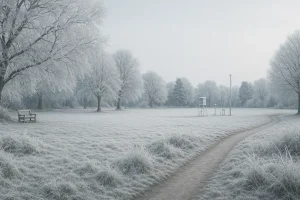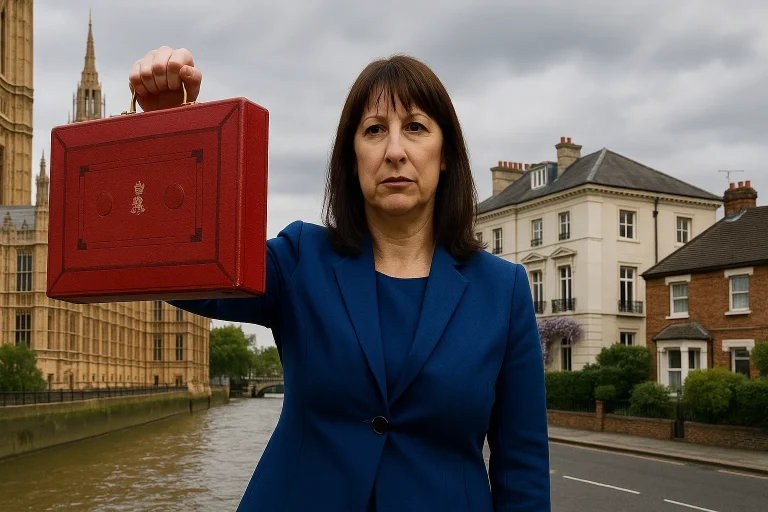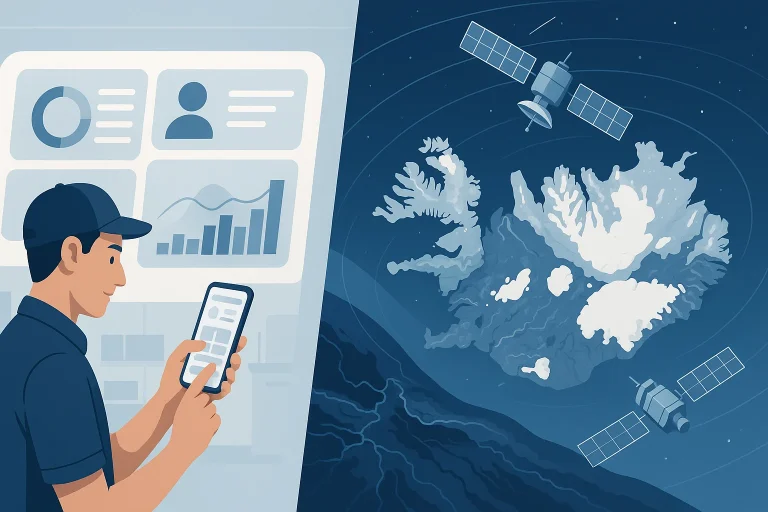Winter has a way of creeping up on us here in the UK, doesn’t it? One minute we’re enjoying crisp autumn walks, and the next we’re reaching for extra jumpers and turning up the thermostat.
As energy prices remain a concern for many households, especially those on lower incomes or fixed benefits, support from the government becomes a financial lifeline.
One question is being asked across the country: When will the £140 Cold Weather Payment be paid in 2025? While some are familiar with the scheme, others are unsure about the timing, how it works, and whether they even qualify.
In this blog, we’ll explain everything about the Cold Weather Payment, from how it’s triggered, to who gets it, and most importantly, when you can expect it to arrive.
Let’s warm up with the basics first.
What is the Cold Weather Payment and How Does It Work?

The Cold Weather Payment is a UK government initiative designed to provide extra financial support during freezing temperatures. Unlike other annual heating schemes such as the Winter Fuel Payment, the Cold Weather Payment is reactive, it’s only paid out when temperatures drop significantly in your local area.
The scheme runs from 1 November to 31 March, and for each seven-day period where the average temperature in your area is recorded or forecasted to be 0°C or below, you may receive £25.
The payment is made automatically to those who qualify, so there’s no need to apply. If several qualifying cold spells occur in your area during the winter period, you could receive multiple payments, leading up to a total of £140 or more in extreme conditions.
It’s also important to understand that this is separate from the Winter Fuel Payment, which is typically a one-off annual payment for older residents, and the Warm Home Discount, which is administered through energy suppliers.
Who Qualifies for the Cold Weather Payment?
Eligibility for the Cold Weather Payment is tied to specific benefits and circumstances. The Department for Work and Pensions (DWP) handles the scheme and has outlined several qualifying conditions.
You may be eligible if you receive:
- Pension Credit
- Universal Credit
- Income Support
- Income-based Jobseeker’s Allowance (JSA)
- Income-related Employment and Support Allowance (ESA)
- Support for Mortgage Interest
However, not everyone on these benefits will automatically receive the payment. There are additional eligibility rules, depending on your situation.
For example:
- If you’re on Universal Credit, you must not be employed or self-employed and may also need a health condition or a child under five.
- Those on Pension Credit typically qualify without additional conditions.
- Individuals on ESA or Income Support may qualify if they have a disability or pensioner premium, or a child under five years old.
These extra requirements ensure that the payments reach those most vulnerable to cold weather, such as the elderly, disabled, or households with young children.
What Triggers a Cold Weather Payment?

Cold Weather Payments are not made on a fixed schedule like other benefits. Instead, they’re triggered by specific weather conditions in your area.
Here’s how it works:
The Met Office monitors temperatures across the country via designated weather stations. Each UK postcode is linked to a nearby weather station, and when the average temperature in that area is recorded or forecasted to be 0°C or below for seven consecutive days, the DWP issues a Cold Weather Payment.
This makes the scheme highly location-dependent. Some areas might never see a payment in a mild winter, while others could receive multiple payments during a colder season.
You can use the official Cold Weather Payment postcode checker on GOV.UK during the scheme’s active months to see whether your area has triggered a payment.
When Will the £140 Cold Weather Payment Be Paid in 2025?
This is the most pressing question for many. If you’re eligible and a cold spell is recorded in your area, you should receive the payment within 14 working days. The money is automatically paid into the same account used for your benefits.
The DWP has not released a fixed payment calendar because everything depends on actual temperatures. However, based on past years, we can estimate the timeline based on the cold spell trigger dates.
Here’s a simple example:
| Cold Spell Period | Estimated Payment Date |
| 1 – 7 December 2025 | By 20 December 2025 |
| 15 – 21 January 2026 | By 4 February 2026 |
| 3 – 9 February 2026 | By 21 February 2026 |
If your area experiences multiple qualifying cold spells, you could receive multiple £25 payments, which could accumulate up to £140 or more depending on the weather.
It’s worth noting that the £140 figure is not a flat-rate payment but rather the potential total across several triggers. The Cold Weather Payment scheme does not pay this amount in a single instalment unless the qualifying conditions are met repeatedly.
How Do You Check If You’ll Receive the Payment?
If you’re unsure whether a Cold Weather Payment has been triggered in your area, the simplest way to check is by using the official Cold Weather Payment postcode checker at www.gov.uk.
You’ll need to:
- Enter your postcode
- Check whether your area has met the temperature criteria
- Confirm whether the payment trigger has been activated
You won’t receive a text or notification, so it’s a good idea to check regularly during the winter months, especially if temperatures seem unusually low in your area.
What Should You Do If You Don’t Receive the Payment?

If you believe you were eligible but didn’t receive a payment, there are a few steps to follow:
First, ensure that your benefit details and bank account information are up to date. This is especially important if you’ve moved home or switched bank accounts recently.
Next, get in touch with the relevant department:
- For Universal Credit, use your online account to send a message to your work coach or case manager.
- For other benefits, contact Jobcentre Plus or call the DWP helpline.
Delays can happen, especially during peak winter months, but missing payments are rare if your information is accurate and your area was officially triggered.
What Other Energy Support Schemes Are Available?
While the Cold Weather Payment is a vital source of support during freezing spells, it’s not the only help available. There are two other major government-backed schemes that support households during winter:
Winter Fuel Payment
This is an annual payment given to those born before 25 September 1958. The amount ranges from £100 to £300, depending on your circumstances. It’s usually paid between November and December, regardless of weather conditions.
Warm Home Discount Scheme
This scheme offers a £150 discount on electricity bills for eligible households. It’s available to those on a low income or receiving certain benefits, and is administered directly by your energy provider.
Some local councils also provide emergency heating grants or discretionary crisis funds, especially during periods of extreme weather. It’s worth checking with your local authority for additional assistance.
Here’s a quick comparison table for reference:
| Scheme | Typical Amount | Based On | How It’s Paid |
| Cold Weather Payment | £25 per cold spell | Temperature + Benefit Status | Automatically by DWP |
| Winter Fuel Payment | £100–£300 | Age (born before Sept 1958) | Automatically |
| Warm Home Discount | £150 | Low income or qualifying benefits | Direct to energy bill |
| Local Council Grants | Varies | Emergency or hardship | Apply to local council |
What Should People Keep in Mind Going into Winter?
The most important thing to remember is that Cold Weather Payments are not guaranteed, even if you’re eligible. Their availability depends entirely on whether the Met Office records a sufficient drop in temperatures in your local area.
However, being prepared helps. Make sure:
- Your benefit details are current
- You’re aware of how to check for cold weather triggers
- You explore additional energy support options ahead of time
Staying warm is a matter of comfort, but for vulnerable households, it’s also a matter of health and safety. The UK government’s suite of winter payment schemes aims to protect those most at risk, and knowing how and when these supports kick in is essential.
FAQs About the £140 Cold Weather Payment
Is the £140 Cold Weather Payment a one-time payment?
No, the £140 is not a single payment. It’s the cumulative amount you could receive if your area experiences multiple cold spells during the winter.
Can I get a Cold Weather Payment and Winter Fuel Payment together?
Yes, as long as you meet the eligibility criteria for both. These are separate schemes.
Do I need to apply every year?
No, Cold Weather Payments are automatic for eligible individuals. You do not need to reapply annually.
Does moving house affect my eligibility?
If you move to a different postcode, your Cold Weather Payment will depend on the new area’s weather station. Be sure to update your benefit details immediately.
Can working people on Universal Credit get the payment?
Usually not. Universal Credit recipients who are employed generally do not qualify unless they have additional needs, such as a disabled child.
How long does it take to receive the payment?
Payments are typically made within 14 working days of the cold spell ending.
What if my area was cold but I didn’t get paid?
Check the postcode checker to confirm a trigger. If you still believe you qualify, contact the DWP to resolve the issue.




